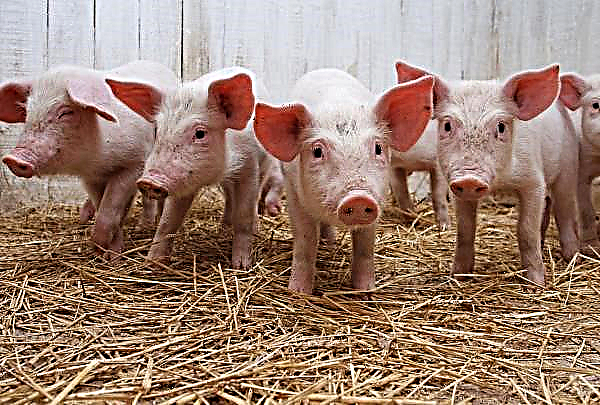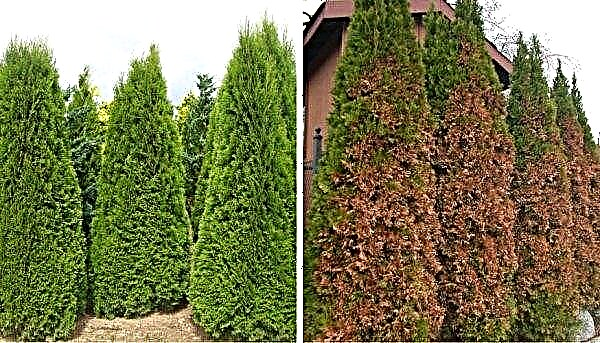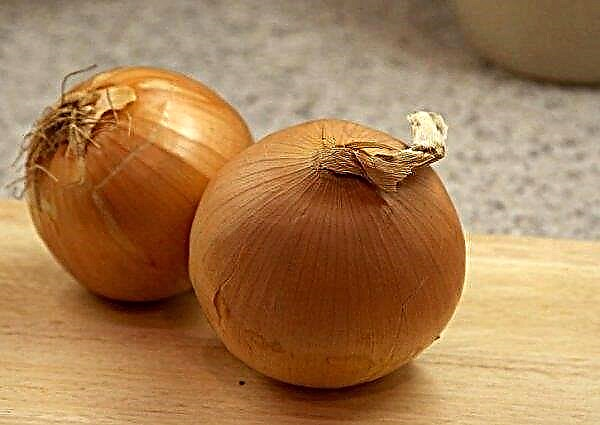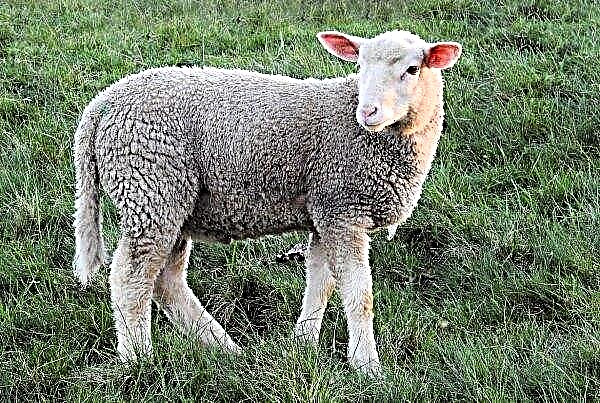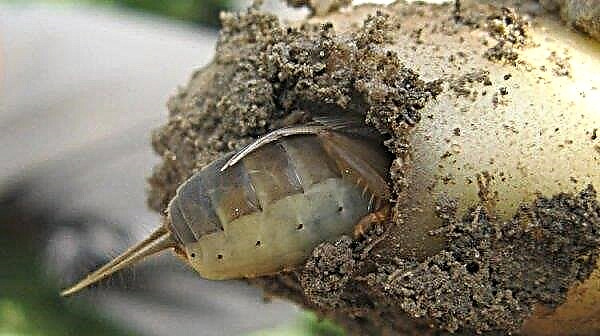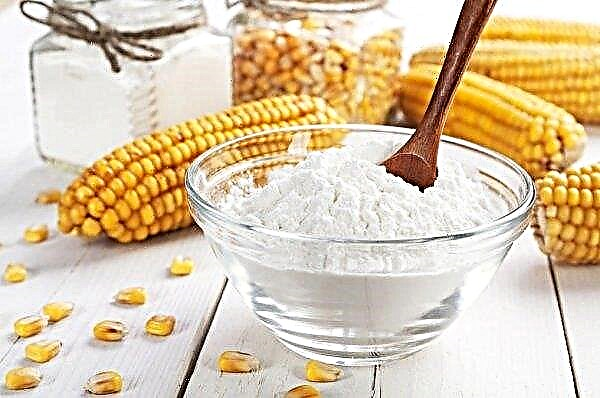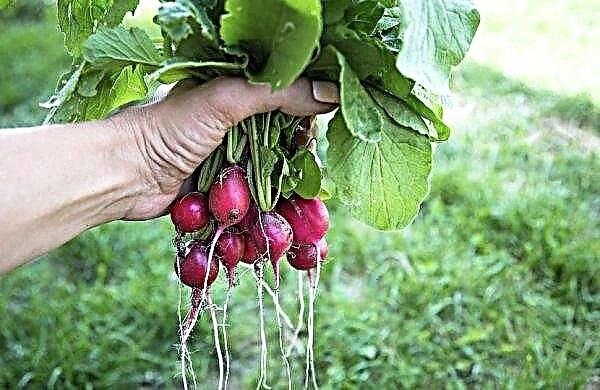Crop production is rich in a variety of plant care methods, which make it possible to get maximum yields with minimal expense and effort. One of them is the so-called drip irrigation system, which allows you to grow quality products even on poor soils. In this article, you will learn in detail about the main features of this system, as well as learn how the drip irrigation distribution line works.
Greenhouse drip irrigation: features
Today, drip irrigation is one of the most effective ways to irrigate the beds, so it is actively implemented by both large-scale farms and private gardeners. The system is designed to irrigate any fruit crops, including tree forms, and is equally effective, regardless of the skills and level of preparation of the farmer.
Benefits of Watering
All kinds of irrigation devices have many advantages over traditional methods of irrigation of plantings.
- The most important among them are the following qualities:
- save expensive water, since watering is carried out only in the root zone, bypassing the aisles;
- improve plant productivity, regardless of the type of crop;
- shorten the growing season and increase the friendliness of fruit ripening;
- reduce the overall labor costs of gardening;
- give the opportunity to gradually moisten the substrate, avoiding sudden changes (protect the beds from waterlogging and drying out);
- help maintain optimal soil aeration, prevent erosion and provide plants with an optimal soil microclimate;
- allow, in addition to water on the beds, to make solutions of mineral and organic fertilizers.
Did you know? Drop watering was invented in Afghanistan in 1866. Local scientists during experiments to improve the yield of fruit crops created a complex of clay tubes for supplying water to each plant.
Principle of operation
Drip irrigation is a special system for introducing liquids into the area. It is widely distributed in crop production, it is successfully used on open soils, as well as in a greenhouse. Such irrigation is most often installed in order to automate the maintenance of plantations, reduce the cost of resources and increase productivity.
It is an electromechanical or mechanical device designed to supply fluid directly to the root zone of plants. Thanks to this, not only water savings are achieved, but also improved plant nutrition, since the necessary substances saturate the root zone of the soil. In addition, it reduces the likelihood of moistening the green mass of vegetation, which reduces the chances of the development of fungi. This technique got its name by chance, since the injection of fluid into the area is rather slow. Only a few dozen drops fall into the soil per minute, and in an hour the consumption per plant does not exceed 4 liters. This makes it possible to slowly saturate the soil with moisture in an uninterrupted cycle, providing an optimal microclimate in the soil throughout the entire period of plant vegetation.
This technique got its name by chance, since the injection of fluid into the area is rather slow. Only a few dozen drops fall into the soil per minute, and in an hour the consumption per plant does not exceed 4 liters. This makes it possible to slowly saturate the soil with moisture in an uninterrupted cycle, providing an optimal microclimate in the soil throughout the entire period of plant vegetation.
Such a system consists of the following nodes:
- fluid intake - the tank or tank in which the accumulation and distribution of the liquid;
- filtration - purifies water from various impurities and suspended particles (this is an optional component, but without it the system often becomes clogged and fails);
- breeding line - A set of various fittings, hoses, etc., providing a fluid supply to each plant.
Types of drip irrigation
Individual watering among plant growers has become so popular that today there are a huge number of all kinds of varieties. In addition, there are many home-made models that are not inferior in functionality to the factory ones. Next, the most effective and popular of them will be considered.
Did you know? Artificial irrigation is one of the oldest agrotechnical techniques used by mankind. It arose during the birth of agriculture, in the Neolithic era (10 thousand years ago).
Homemade
Home-made systems are usually based on factory models, but they have several advantages. Often they are constructed from improvised materials, which makes them less expensive. In addition, only home-made plants allow you to create an irrigation system, taking into account all the needs and needs of the gardener.
From a barrel or bottle
Barrel and bottle systems are the most popular. The barrel is a large reservoir, from which the supply lines from flexible hoses are allotted. On their surface there are small holes with a diameter of 1-3 mm, and the reverse side is sealed.
Thus, spreading throughout the site, the highway brings water to each bed. Water is distributed through the system thanks to the simplest laws of physics, the barrel is installed at the top point, at an altitude of about 1-2 m above the surface of the plantations. Due to gravity, water fills the entire line, distributing moisture evenly throughout the territory. The bottle system is simpler; it is based on ordinary plastic bottles with several holes in the bottom (1-3 mm). A separate bottle is placed in the growth zone of each plant, and then it is filled with water. As the moisture is consumed, the tank is filled with fresh liquid.
Due to gravity, water fills the entire line, distributing moisture evenly throughout the territory. The bottle system is simpler; it is based on ordinary plastic bottles with several holes in the bottom (1-3 mm). A separate bottle is placed in the growth zone of each plant, and then it is filled with water. As the moisture is consumed, the tank is filled with fresh liquid.
From droppers and plastic pipes
Watering from droppers in its principle resembles a system of plastic bottles, however it is more convenient. For its construction, a horizontal support is installed near each plant, on which 1-2 droppers are fixed. She can serve as a high peg made of plastic, metal or wood. The adjustment of fluid intake is carried out using a catheter, which is sent with the opposite end to the basal circle.
The main drawback of such a system is the need for water refill, however, this is done no more than 1 time per day. The plastic pipe system is both a simple and technically advanced device for watering beds. Outwardly, it may resemble irrigation from a barrel, however, it has a lot of advantages.
Important! As a support, you can use pegs for garter, but before that you need to provide that full droppers do not lead to their breakage.
It allows you to mount easily-erected and durable structures that are characterized by fairly high accuracy. They are based on pipes made of polypropylene, which lead to each plant. Water comes from a small hole, which is made near the pipe section closest to the basal zone.
The basis of the water intake of the system can be both an artificial reservoir and a central water supply. But most often, farmers create a comprehensive irrigation line, which also allows you to make a variety of dressings on the site.
Ready from the manufacturer
Ready-made irrigation systems are no less popular among gardeners than self-made ones. Their main advantage is that they allow watering the site not only more efficiently, but also provide beds with a minimum of moisture with maximum return. And this directly affects the quality of the future crop.
Drop watering "Beetle"
This is an artificial humidification system, which is a complex of polyurethane or rubber tubes. It combines the main highways, of which lateral, thinner branches resembling the legs of beetles are located at equal distances. Despite the huge efficiency, the “Beetle” among gardeners is considered the most simple, but at the same time inexpensive installation.
Important! When choosing a trunk system, you should also pay attention to the diameter of the central channels. Diameter 16 mm suitable for irrigation of beds up to 300 m long, 22 mm — for plots up to 750 m in length.
Watering is done by gravity, from a stationary tank. The main drawback of the Beetle previously was the lack of automated blocks of functionality, but in recent years this problem has been solved. Today it allows you to set an irrigation timer or a complex of all kinds of devices that automate irrigation.
There are two varieties of watering type "Beetle":
- greenhouse - allows you to provide up to 60 plants on 18 m²;
- greenhouse - allows you to moisten about 30 bushes in an area of 6 m².

Automatic system "Aquadia"
"Aquadia" is considered a more advanced installation for irrigation. It consists of a branched trunk made of UV-resistant material and individual droppers, which are located under each plant. The system can be controlled using a reverse pump controlled by an electronic unit.
Important! A liquid container is best installed on the sunny side of the site. — this will help speed up the warming of the water. Cold liquid is harmful to the roots of plants and often causes wilting of the root system.
With its help, not only the launch of the entire system is carried out, but also the adjustment of the amount of introduced water. Thus, “Akvadusya” is a professional miniature irrigation system that can be mounted in a small suburban area.
The following models of the Aquaduya system are:
- Water Tap - a universal installation that collects the introduced liquid both from a stationary tank and from a central water supply.
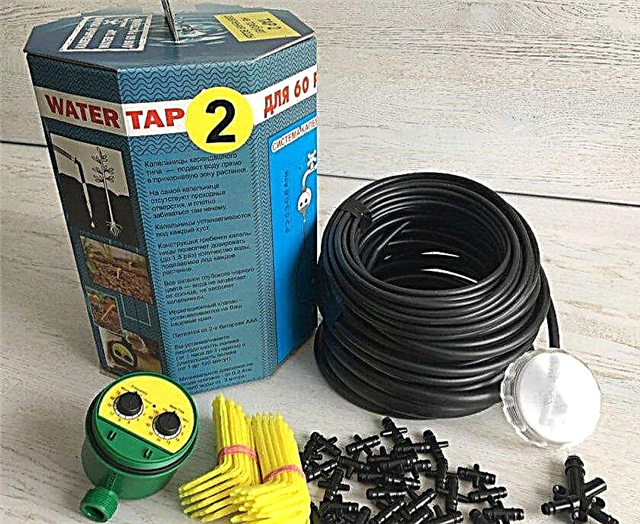
- «60» - The simplest system, not including an automatic control unit. At its core, it is a complex of irrigation hoses and tubes that connects to a fluid source.

How to choose a finished drip irrigation in a greenhouse
Choosing an irrigation plant is often a daunting task, even for experienced gardeners. Many simply do not imagine what you need to know when buying an irrigation line, and what technical characteristics should be paid attention to. Most often, any of the factory models does its job perfectly, regardless of the complexity of the installation.
However, special attention should be paid to the choice of a transport highway. It is in direct contact with water and plays a major role in the effective supply of water to plants. The first thing you should pay attention to is its type.
The following breeding systems exist:
- Zigzag - It features quite twisty corners and complex angles; it is best suited for simple irrigation plants. Due to its shape, it allows you to slow down the flow of water, which contributes to its uniform heating and optimal mode of moisture intake without complex electronic systems.
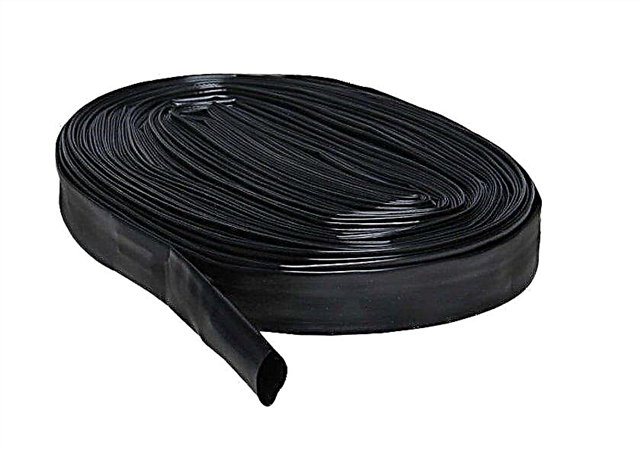
- Crevice - consists of flexible channels, which allows you to instantly mount and remove it. Instead of holes, moisture enters the soil through elongated slots, however, this affects its durability. Slots are often clogged with dirt, so the slit line is used only in combination with a water filter.
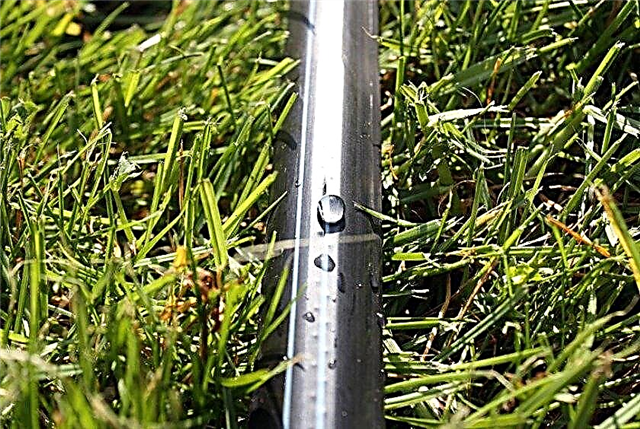
- Emitter - the most technically advanced and complex type, characterized by durability and versatility of the design, which allows you to mount the supply line with any step. Its main disadvantage is the high price.

The duration and effectiveness of highways depends on the thickness of their walls, which varies from 0.13 to 0.38 mm:
- 0.13 mm - the most simple and budget option, such trunk belts are short-lived and are used for crops with a short ripening period and only on light soils;
- 0.15 mm - it is applied on any type of soil, under crops with an average ripening period;
- 0.2 mm - long-life universal highway, suitable for any soil and crops, usually serves for many years;
- 0.25 mm - works best on soils with stony inclusions, such tapes are resistant to damage and mechanical stress;
- 0.38 mm - It is used in mountainous areas and on rocky slopes, such highways are extremely resistant to damage and any mechanical impact.
Another important point when choosing an irrigation system is the throughput. This indicator directly affects the entire irrigation efficiency, on which the productivity of all plantings largely depends. For most fruit plants, it is necessary to provide a fluid flow rate of about 1–1.5 l / h. For trees and crops with a highly developed root system, this indicator is selected individually, within 2–4 l / h.
How to make a drip irrigation system with your own hands
Despite its technical excellence, it is possible to construct high-quality drip irrigation with your own hands, using improvised tools and materials from a nearby construction store. In this case, special attention should be paid to the design of the water supply system and provide for all necessary additional supply and branching. Both the speed of installation and the efficiency of the installation as a whole depend on this.
Watering scheme
The irrigation scheme is chosen on the basis of the basic principles of agricultural technology for growing future crops. It provides a certain row spacing depending on the size of the root system and the moisture-absorbing ability of the roots.
To do this, the area of the greenhouse is divided into 3 separate zones:
- First should be the largest, with a dropper pitch of 40 cm. Here it is best to grow solanaceous, pumpkin and cruciferous crops.
- Second should occupy 2/3, in increments of 20-30 cm. Most other greenhouse crops are grown in this area.
- Third make the smallest, with a step of 10 cm, which is best suited for growing onions and herbs.
Mounting Materials
For the installation of the structure, the following materials will be needed:
- tank for water intake (its volume is selected with a calculation of 30 l / 1 m² plot);
- plastic pipes with a cross section of 16 or 22 mm (the quantity is calculated based on the layout of the site);
- valve and ball valves;
- plugs, adapters and pipe corners (purchased as needed);
- adapter tap for connecting the tank and the central line;
- trunk tape and a set of adapters to it.

Of the tools you need to get the following:
- pliers;
- roulette;
- adjustable wrenches;
- drill;
- pipe cutters;
- puncher;
- threads with pegs (for marking).
Features of the installation of external droppers
The installation of irrigation droppers begins with careful planning of the entire process. At this time, the necessary amount of materials should be calculated, as well as the installation site of the highway on the site.
After that, you can proceed directly to the installation of the entire system:
- Outline the installation area of the droppers with a thread and pegs, and then create a marking of the main channels and their branches.
- Install a water tank near the site at an altitude of 1.5–2.5 m above the soil.
- Drill a hole near the bottom of the tank along the diameter of the main pipes, and then install a tap on it.
- Locate the central lines in the area according to the layout you created earlier, and then connect them to the tank. Connect the individual pipe sections using plastic adapters.
- Connect droplet tapes with droppers to the side branches and install the caps on the back edge. In this case, the dropper hole should be as close as possible with the zone of the future near-trunk circle of stands.
- Connect the system from the pipes to the tank. If possible, install a filter in the place where the water comes out of the tank to protect the irrigation system from clogging.
- Fill the tank with liquid, then open the tap and humidify the beds.
Video: how to make drip irrigation from external droppers with your own hands
The resulting irrigation system is quite simple and durable, but not without drawbacks. To start irrigation and its functioning, careful monitoring is required, which often creates quite a lot of difficulties. The installation of automatic start blocks will help to solve them. To do this, after the outlet valve, a solenoid valve with a timer is connected, then a pressure reducer.
Using one and the second device, you can set the exact interval of irrigation, as well as the volume of fluid used. The valve turns on the system at the right time, and the gearbox maintains the right pressure, which affects the speed and efficiency of irrigation. In this case, drip irrigation is often connected to the central water supply, which not only simplifies the maintenance of the system, but also facilitates installation.
DIY drip irrigation tips
Designing drip irrigation of beds is most often possible even for a novice farmer, but for many this process takes a lot of time.
The following tips will help speed up the installation of irrigation lines:
- during the design of the system, it is necessary to take a real plan on a scale;
- you should not save on components, since the durability of the entire structure most often depends on them;
- when choosing the type of trunk tape, it is necessary to take into account the type of soil, as well as the need to dismantle the structure at the end of the season;
- the diameter of the tubes and other nodes should not be selected with a margin: this will not increase the irrigation efficiency, but will seriously affect the final cost of the structure;
- the system should be carefully adjusted before start-up, during operation, the soil should be moistened evenly, and an even, moist strip should remain in the length of the highway;
- mistakes made during installation are eliminated rather hard, so you should not rush during the design of the irrigation system.
Drip irrigation is one of the most advanced crop plantation care systems that allows you to get maximum yields with minimal resources. Today, there are several options for equipping artificial irrigation, including home-made installations. They are not inferior in efficiency to factory ones, while they have a lower cost and minimal costs for subsequent care.






